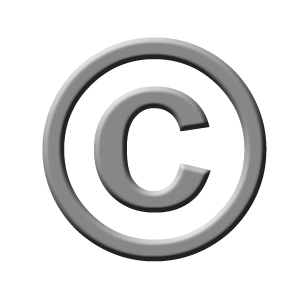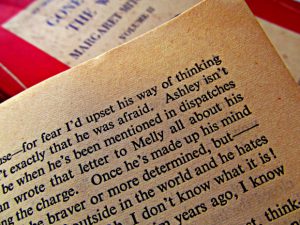

Blog
Welcome to the Busybird blog, where you can find helpful articles, updates, industry news and more. Make sure you stay up to date by signing up to our newsletter below.
Top 10 Surefire Tips to Writing a Bestseller
December 8, 2016 This is my one hundredth Busybird blog since Busybird moved into our Montmorency Studio ~ Gallery.
This is my one hundredth Busybird blog since Busybird moved into our Montmorency Studio ~ Gallery.
I thought I’d do something special to commemorate the occasion.
Something that’s never been done on a publishing blog before.
I am now going to give to you the Top 10 Surefire Tips to Writing a Bestseller!
Here goes …
10. Find your own voice, and the process that works for you.
Don’t try to write like anybody else. Write the way only you you can write. Similarly, it’s great to soak up wisdom from other writers and to try things that they say works for them, but ultimately you need to find your own process. What works for me mightn’t necessarily work for you.
9. Don’t imitate.
Don’t write what’s in vogue because you think it’s going to sell. Write the story you want to write. It mightn’t be the most original story in the world – e.g. a love story, an epic fantasy – but it’s going to be your story, and the hook behind it is that it’s going to be the story only you can tell. So write your story, and write it your way.
8. Get your story out on the page.
Don’t worry about perfection first-up. Get a draft out on the page. Once you have it down, you then have something to work with. You can’t work with nothing.
7. Keep it justified.
If you have a convoluted structure, POV shifts, tense changes, or whatever the case may be, make sure they’re justified, rather than choices of whimsy. Choices of whimsy usually read as random and, well, amateurish. Be justified in your choices. Ask yourself why these shifts might occur. Otherwise, just keep it simple. Write in a straight line: the story starts here, moves forward, and ends there.
6. Write every day.
Writing is about momentum. The less you do it, the harder it is to stay enthused about it, to get back into it, to remember what you’re up to, and what you’ve already done. You’ll find you’re constantly rereading older chapters, trying to re-familiarize yourself with the story. The more you write, the easier it is to get back into, the more you look forward to doing it, and the more your story will open itself up to you.
5. Revise. Revise. Revise.
Don’t think your first draft is gold. Or that going over it once satisfies the demands of revision. The best writers revise constantly. Revise until you can get no more out of your piece. Then put it away for a while. Then take it out. Then revise, revise, revise. When you can get no more out of it, see the next step – but not before.
5. Get an external opinion.
Avoid family or friends or pets who’ll either tell you what you want to hear (‘Oh yeah, it’s totally awesome! Woof!’) or who’ll be destructive (‘Why’re you wasting your time?’). People need to be constructive in their criticism, and justified as to why they believe that criticism is warranted. Find somebody who can do this for you. This might be a manuscript assessor, an editor, a workshop group, a writing buddy, etc. Once this is done and you’ve made the changes required, go to the next step.
4. Revise. Revise. Revise.
Examine the feedback you’ve received. You don’t have to agree with all of it. If you don’t, make sure you’re not being precious. Have a valid rationale for why you disagree. But be brutally honest. Then revise. Revise until you can get nothing more out of it.
3. When submitting, be professional.
Observe submission guidelines. Don’t think you’re so brilliant that you can ignore them because you’ll wow them anyway. You won’t. You’ll piss them off. Do you really want to be a pisser-offer? If you’re rejected, don’t take it personally, even if the rejection isn’t very nice. Don’t think firing off an email suggesting they don’t know what they’re talking about, they missed the point, or they’ll regret the day they rejected you, is going to accomplish anything other than show your lack of professionalism. As an aside, lots of the people who work for these places talk (to one another). Get a bad reputation with one, and it’s likely to spread.
2. Grow a thick skin and learn to persevere.
This industry is subjective. There’s plenty of examples of books that have been rejected repeatedly, but picked up elsewhere and then gone on to be hits, and to win awards. So learn to take nothing personally, even if feedback seems personal, e.g. JK Rowling’s pseudonym, Raymond Galbraith, was told to join a writing class. Use it as a motivator. Persevere.
1. Do you really think there’s a formula for a bestseller?
Nope. Sorry. I fibbed. There really isn’t a formula. Don’t believe there is. What do you think this is – a wonderland? We hear lots of people say, ‘I have an idea for a book – it’s going to be a bestseller.’ Why? Multinational publishers – who are risk averse – only accept books they think they’ll be able to sell. They spend money marketing them. But that doesn’t guarantee success. That’s just the reality of the market. If there was a formula, or unfailing belief was enough, then everybody would be doing it. We just can’t know for sure. At the very best, all we can do is put ourselves out there. And that’s the key.
So keep writing. Keep pushing.
It’s the only way to give yourself any chance.
Be YOU
December 1, 2016 Something that always astonishes me is the disregard authors can have for copyright.
Something that always astonishes me is the disregard authors can have for copyright.
Here’s the simple reality: you can’t just take things from elsewhere and use them.
Why would you be able to do? Why should you be able to? How would you feel if somebody took a chunk of your book and started using it for their own benefit? Worse, how would you feel if they used it and they didn’t accredit you?
Let’s begin with song lyrics. No, no, no, no, no. You can’t just grab a couple of lines from a Rolling Stones’ song and use it. No. You can’t even take a couple of lines from some pub band’s song and use it. You have to get permission. Usually, this is from the artist or the record company. Just be warned: obtaining rights is usually time-consuming and expensive. (As an aside, all those websites on the net that post lyrics are actually in violation of copyright.)
How about images? You see something great on Facebook and grab it. It’s on the net, so you can use it, right? No. Somebody owns the rights to that image. Again, just because it’s on the net doesn’t mean it’s free to use. Similarly with diagrams, graphs, etc. Somebody’s put work into creating these. In all likelihood, they’ve created them to benefit from them, and not so you can reap the rewards.
Usually you’re okay quoting a small passage from an external source, as long as you accredit it (unless the author doesn’t want to be accredited). Usually. It can depend on how meritorious that passage is. You might be a Life Coach and want to use an exercise Tony Robbins has in his book – it’s just a tiny passage, no bigger than a paragraph. No problem. Right? Wrong. This is his intellectual property. Why should you profit from it? If people can get Tony Robbins’s exercise from you, you’re undercutting Tony Robbins. The problem here is you might take a passage and think you’re okay, but if the copyright holder objects, then you’re in trouble. I’ve had the Tony Robbins’ empire object to an author using one of his exercises; I’ve had another author object to one paragraph from his book being quoted.
Don’t think rejigging the sentence gives you ownership either. Consider this single sentence on the ‘Novel’ from Wikipedia (https://en.wikipedia.org/wiki/Novel):
- A novel is a long narrative, normally in prose, which describes fictional characters and events, usually in the form of a sequential story.
If I change it to this …
- Describing fictional characters and events, a novel is a long narrative, usually in prose and normally in the shape of a sequential story.
… I’m still plagiarising!
Also, if your book is an ebook (or going to become an ebook), Amazon performs an automatic check of the text, will report if it finds it duplicated elsewhere on the net, and will ask if you own the rights to the material. There’s examples where you might, e.g. your book might contain your blogs, or articles you’ve had published elsewhere. In this example, I don’t. My alternative is then to not publish, or to lie.
About the only time you don’t need copyright is when that copyright has expired – in Australia, usually 50–70 years after the authors’ death. Otherwise, if you’re using anything that’s not yours, SEEK PERMISSION. Most publishers will have somebody you can contact specifically for permissions. When all else fails, email whoever handles their general queries. Alternatively, most authors/artists can be found on social media. If it’s a case of some random image floating around and you can’t find out who owns it, bad luck. Don’t use it.
And don’t expect your editor or your publisher to identify what you can and can’t use either. This is your responsibility. A third party isn’t always going to be able to identify that you lifted several paragraphs from somebody else’s article or book, or that nifty bit of dialogue is actually a character quoting lyrics from some obscure grunge band’s song, or that the image you’re using on the title page of chapter 7 was lifted from some friend of a friend’s Facebook post.
This is up to YOU.
Trying to track these copyright-holders might be tedious and time-consuming, and in some cases it might even be costly, but consider the alternatives:
- Your book could be pulled from the market.
- There could be financial liability.
- Your reputation will be damaged, if not ruined.
So is it worth it?
There mightn’t be a lot of original ideas left in the world. A love story is still just a love story. A disaster story is still a disaster story. A business book on growing your business is still just a business book on growing your business. A life-coach book on improving your life is still just a book on improving your life. Etc. These books – and more – saturate the market.
What’s original is YOU – how you write it, what you have to say, and where you take whatever you’re writing.
Remember that when you start writing.
The Publishing Process
November 24, 2016 Have you ever wondered about the work that goes into transforming a manuscript into a book once a publisher accepts it?
Have you ever wondered about the work that goes into transforming a manuscript into a book once a publisher accepts it?
It’s not as simple as the publisher saying, Hey, that’s great! and then sending it off to be printed. The publisher will put the manuscript through a rigorous process, usually retaining (either on staff, or subcontracting) different professionals to oversee each step. (A small publisher might have people doubling up on roles, e.g. an editor might perform the structural and copy edit.) The publisher will also set a timetable with you, giving you deadlines to hit for each step.
Here now is a breakdown of those steps …
Structural Editing
This looks at the story as a whole and how it functions. Are the plot and subplots believable? Do they need to be rounded out or pared back in some way? Are the characters fully realised? Is the writing sound throughout? Is it overwritten in passages? Underwritten? Unclear? Are their phrases that you rely on that become repetitive? Etc. The structural edit will examine how the manuscript functions (as a whole) on multiple levels (e.g. story, character, prose).
This is when you’re given the mandate to revise. You’ll either get feedback in a separate document, or you’ll get feedback in a separate document and your story marked up in Word. They’ll usually ask that you make your revisions in Track Changes, so they can see what you’ve done.
As an aside, it’s your responsibility to get permission for any external material you might’ve used, e.g. passages from another book, song lyrics, images. The publisher won’t do this. Nor will they indemnify you if you have used something without permission and get in trouble.
A structural edit is pivotal. Much (if not all) of this stuff you won’t see for yourself because you’ll have no objectivity in evaluating your own work – especially if you’ve gone over it so often that the words and content have lost all meaning.
Copyediting
Copyediting looks specifically at the grammar, punctuation, spelling, and – if examples remain after the structural editing – if the writing itself is clear. You’d be amazed at the quantity of issues a good copyeditor will pick up.
Publishers (and journals) will also apply their own House Style. House Style is how they like things formatted, e.g. do they use an en dash (–) or an em dash (—)? For dialogue, do they use ‘single quotes’ or “double quotes”? With spelling, do they prefer ‘realise, socialise, terrorise’, etc., or ‘realize, socialize, terrorize’, etc.?
The list behind any publisher’s or journal’s House Style can be comprehensive, and exists to bring uniformity to their publications.
At this point, we’re still working in a Word document.
Note: Both the structural edit and copyedit may be repeated until a desired outcome is achieved.
Layout / Design
A designer will be retained to lay the manuscript out in InDesign – the industry-standard software for book formatting. This is what gets books looking the way they do (just in case you thought people were simply slapping things together in Word or Microsoft Publisher).
A cover will also be designed, (using, as a foundation, a brief the editor has supplied about the book’s content). The author might have some input (and will be able to offer feedback on drafts), but the publisher has a much better understanding of what works and what doesn’t in the market.
Proofing
You’ll be sent a laid-out version of your book (usually as a pdf) to look over. This is not the stage to start rewriting or adding things. All that should’ve been taken care of during the editing. Here, you’re looking only for things that might’ve slipped through (e.g. typos) or issues the layout might’ve introduced (e.g. perhaps you used internal headings throughout chapters, and several have been swallowed up into standard text).
The publisher will also retain a proofreader – somebody who hasn’t seen the document previously (fresh eyes!) – to perform a proofread. The proofreader is the final safeguard in corrections.
Off to Print!
This is when your manuscript becomes a book.
You can see how much work goes into taking a manuscript – no matter how polished you believe it is – and transforming it into a finished product on every level: structurally, the copy, and the design (the cover, and the internal look of the book).
It’s also worth thinking about if you’re considering self-publishing, as too many self-published authors do believe it’s just a case of sending their work to a printer, and away they go. Don’t worry about the content, copy, or look – it’ll wow readers regardless. No. God no. If it was that easy, that’s what everybody (including traditional publishers) would be doing.
Self-publishing is a great alternative. New technology ensures that it’s inexpensive, that you’ll end up with a product indistinguishable from books coming out of the big multinational publishers, and it’s easy to replicate everything they would do for an author.
But if self-publishing is something you’re going to do, make sure you put the same level of work in to do it right.
Be just as thorough as a traditional publisher is.
The Fetishisation of the Printed Form
November 17, 2016 I watched a discussion at the Independent Publishing Conference where a panellist said he didn’t believe in the ‘fetishisation’ of the print book as a reason readers preferred it over the ebook. This means he didn’t believe people enjoyed the print book for things like its texture, the smell of its pages, the shape of the words, etc.
I watched a discussion at the Independent Publishing Conference where a panellist said he didn’t believe in the ‘fetishisation’ of the print book as a reason readers preferred it over the ebook. This means he didn’t believe people enjoyed the print book for things like its texture, the smell of its pages, the shape of the words, etc.
Yet most readers maintain their allegiance to the print book. That’s worth thinking about given it wasn’t too long ago many thought the emergence of the ebook would eliminate the need for the print book. That hasn’t happened. Ebooks spiked early with their sales, then hit a plateau. The print book remains as strong as ever.
Why?
The ebook is a form of convenience. From a practical standpoint, we’re don’t need to cut down trees to print ebooks. They’re cheaper and you can carry numerous books on your reader, rather than have to lug around enough books to give you a hernia. You can order any books – even ones that would be difficult (if not impossible) to obtain in print – and have them delivered to your reader instantly. If you have readers across multiple platforms (e.g. on your tablet, on your phone) they’ll automatically synchronise where you’re up to, so you’ll never lose your page regardless of where you’re reading. These are all undeniable advantages.
But readers are still faithful to the vehicle – in this case, the printed form.
And, of course, a fetishisation exists, because fetishisation exists in everyday society. Where would you enjoy a movie most – in Gold Class, IMAX, a normal cinema, watching a BluRay, a DVD, on your tablet, or on your phone? If fetishisation didn’t exist, it wouldn’t matter where you watched it, because you’d only be concerned about the content. What would you rather drive – a Ferrari, a Ford, or a KIA? If you were going out to a wedding, do you dress in your finest, in everyday casual-wear, in a tracksuit, or in your pyjamas? If you wanted to enjoy an art exhibition, would you go see Rembrandt or Joe Blow?
These examples can go on. They exist in every level of life – material, cultural, and functional. It matters to us how things look. If it didn’t, we’d dress the same, look the same, and have the same tastes. We wouldn’t lament cloudy days and revel in sunny days. Art (in any form) wouldn’t exist because we couldn’t possibly have an appreciation for it. There would be nothing but pragmatism. Everything else would only exist as a means to an end.
But appearance – and particularly beauty – appeal to us.
Why should books be any different? This is why people will collect different editions with new covers, new sizes, new looks – that fetishisation of the form matters. It gives us a tactile connection to the physical form, just as we can have tactile connections to locations, to sounds (like songs), to smells, etc. It’s about how the world resonates with us, how we interpret it, and what that interpretation means to us.
Surely, this is something the manufacturers of ebook readers recognise, given they continually strive to make ebooks look more like printed books. They try to duplicate paper colouring, the resolution of fonts, and the cosmetics behind the layout. They’ve even gone as far now to create the illusion of a page being turned. If the fetishisation of the printed form didn’t matter, why would the manufacturers bother? Why wouldn’t it just come down to electronic text on an electronic page? The answer is obviously it does matter and manufacturers are trying to duplicate that very real connection readers develop – and nurture – with the printed form.
Justifying Structure
November 10, 2016 How are you going to tell your story?
How are you going to tell your story?
Most authors won’t even think about it. They’ll just sit down and write, and let their story take its own form. It doesn’t have to be any more complicated than that. And, lots of times, it feels the natural way to do it, so why overthink it? If it’s natural, it must be right.
Right?
No.
An inexperienced author might use reams of exposition whenever they introduce a new character. This may be natural to them. Does that make it right? To them, maybe, because this is as much as they know. But, in all likelihood, the overblown exposition will disengage most readers for whatever reason – because it bores them, because it shatters their suspension of disbelief, because it’s superfluous, and on this list goes.
Whilst the initial choice behind the structure of your story might be instinctive, it’s worth examining whether that choice (or those choices) have merit and will help or hinder your story being the best possible story it can be.
Is your story going to be first person, second person, third person, or third person omniscient? Why are you using that POV? Think about it. Think about the benefits it gives you and how it serves the story. Does the POV shift? If so, why? A story might transfer from third person (symbolising the protagonist’s disconnect from the world around them) to first person (because now the protagonist has gained a self-awareness). Does it shift from past tense to present tense to show the protagonist becomes hyper-aware of the world around them as it’s unfolding?
It’s great to feel as if your natural choices, as if your instinctive choices, will guide you to produce the best narrative possible, but those instincts are usually informed by knowledge and experience, just the way a top doctor might be able to look at a patient and – despite limited symptoms exhibited – diagnose them intuitively. The doctor isn’t prescient. They might have a lifetime of experience and education funnelling into their interpretation of what’s happening to produce – or, at the very least, complement – that single moment of intuition which produces that diagnosis.
Too many authors want to be innovative or complicated unjustifiably. They employ POV shifts, tense shifts, structural shifts (e.g. flashbacks), etc. The question always is the same: Why? It’s fine to experiment. Experimenting helps us learn by doing. But usually, the best course is the simplest. If you plan to deviate, then bring it back to that question: Why? Examine it. See if it works for you and, if it does, work out why it works for you. If it doesn’t, find out why it doesn’t.
Everything should have a reason for why it’s done outside of it simply being a natural choice. A reader will appreciate these decisions if there’s a justification and purpose behind them, even if the reader doesn’t understand that from a technical standpoint. It’ll engage and stimulate them and their interpretation of your writing. But when these changes exist arbitrarily, with no real grounding or motivation behind them, all that’s likely to happen is you’ll have your reader saying, Huh?
